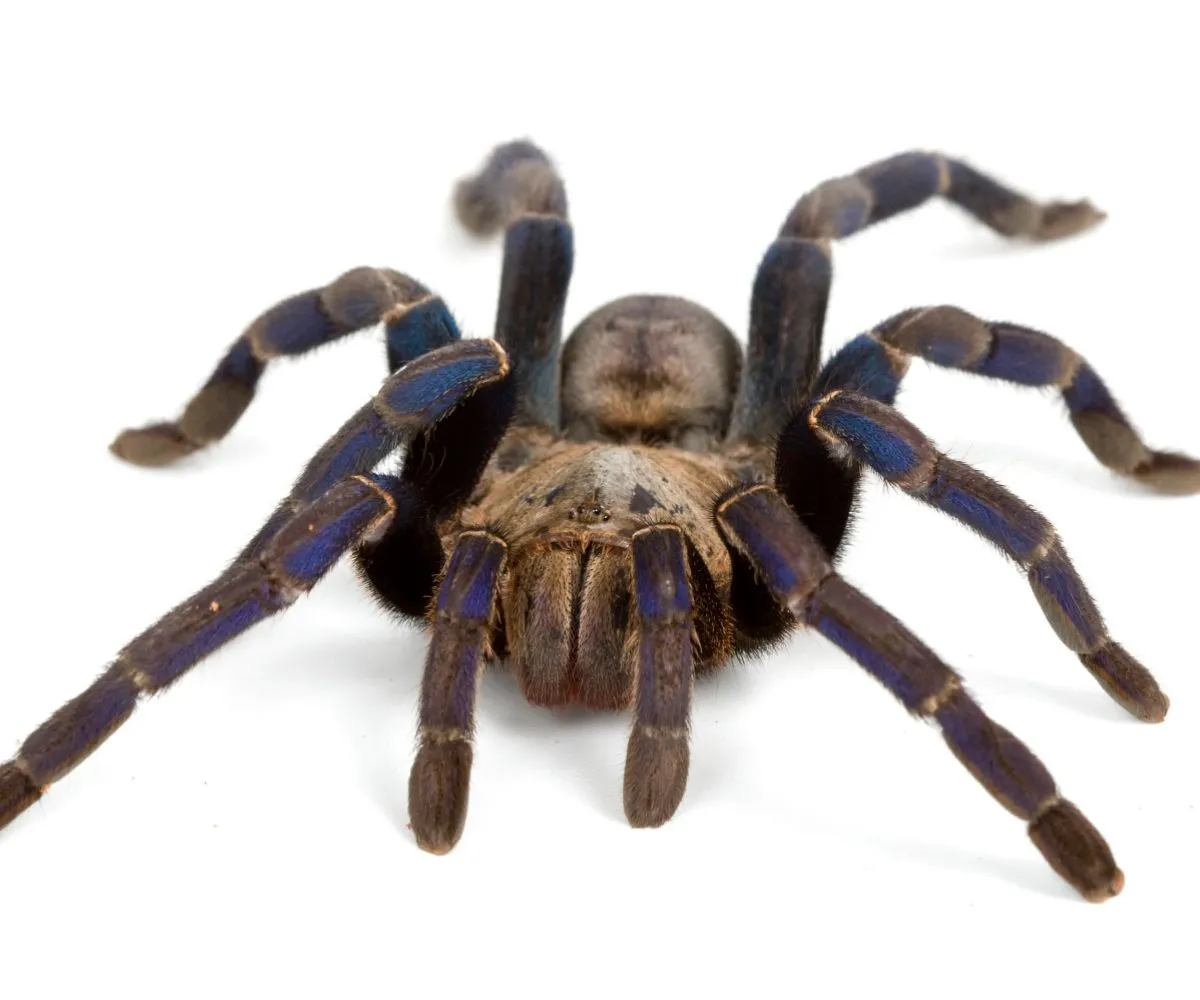What is a Blue Tarantula?
The Blue Tarantula, scientifically known as Cyriopagopus (formerly Haplopelma) sp., is a captivating spider species sought after by arachnid enthusiasts. Renowned for its striking blue coloration and relatively docile nature, this tarantula has become a popular pet choice. Native to Southeast Asia, particularly Vietnam, these spiders boast a vibrant hue that sets them apart from many other tarantula species. Their captivating appearance, combined with a manageable size, makes them an intriguing addition to any exotic pet collection. Their appeal lies not only in their beauty but also in the unique experience of caring for such a fascinating creature. Owning a blue tarantula offers a glimpse into the world of exotic pets, providing a rewarding experience for those willing to learn and adapt to their specific needs.
Origin and Habitat
Understanding the origin and natural habitat of the Blue Tarantula is essential for providing proper care. Native to the tropical rainforests of Southeast Asia, specifically countries like Vietnam, these tarantulas thrive in humid environments. Their natural habitat influences every aspect of their care requirements, from enclosure setup to temperature and humidity levels.
Where do Blue Tarantulas Come From?
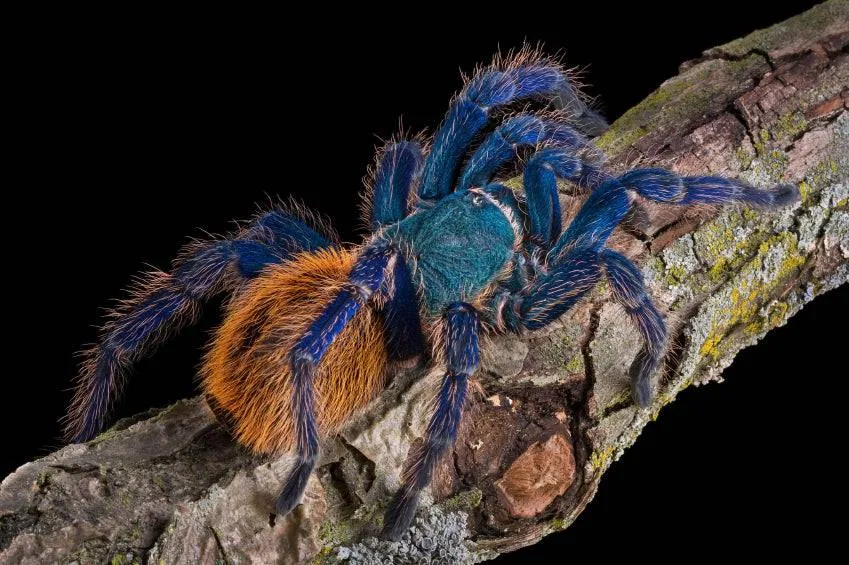
Blue Tarantulas originate from the dense, humid rainforests of Southeast Asia. Their specific distribution includes areas within Vietnam and neighboring regions. They are typically found in burrows within the forest floor, utilizing the shelter of the undergrowth and leaf litter to create their homes. These spiders have adapted to the warm, moist conditions of their environment, making their care in captivity a delicate balancing act to mimic their natural surroundings.
Blue Tarantula’s Natural Habitat
In the wild, Blue Tarantulas inhabit burrows within the forest floor. They prefer areas with high humidity and moderate temperatures. The forest floor provides a constant supply of food, such as insects, and offers protection from predators. The presence of dense vegetation and leaf litter is also crucial for maintaining the necessary humidity levels. Replicating these conditions is vital for the health and well-being of a Blue Tarantula in captivity.
Blue Tarantula Appearance and Characteristics
The captivating appearance of the Blue Tarantula is one of its most appealing features. The vibrant blue coloration is a result of iridescence, a structural phenomenon that causes light to reflect and diffract, creating the blue hue. This striking color, combined with their relatively large size, makes them stand out among tarantula species. Understanding their physical attributes and unique features is crucial for both admiring their beauty and ensuring their health and well-being.
Size and Color
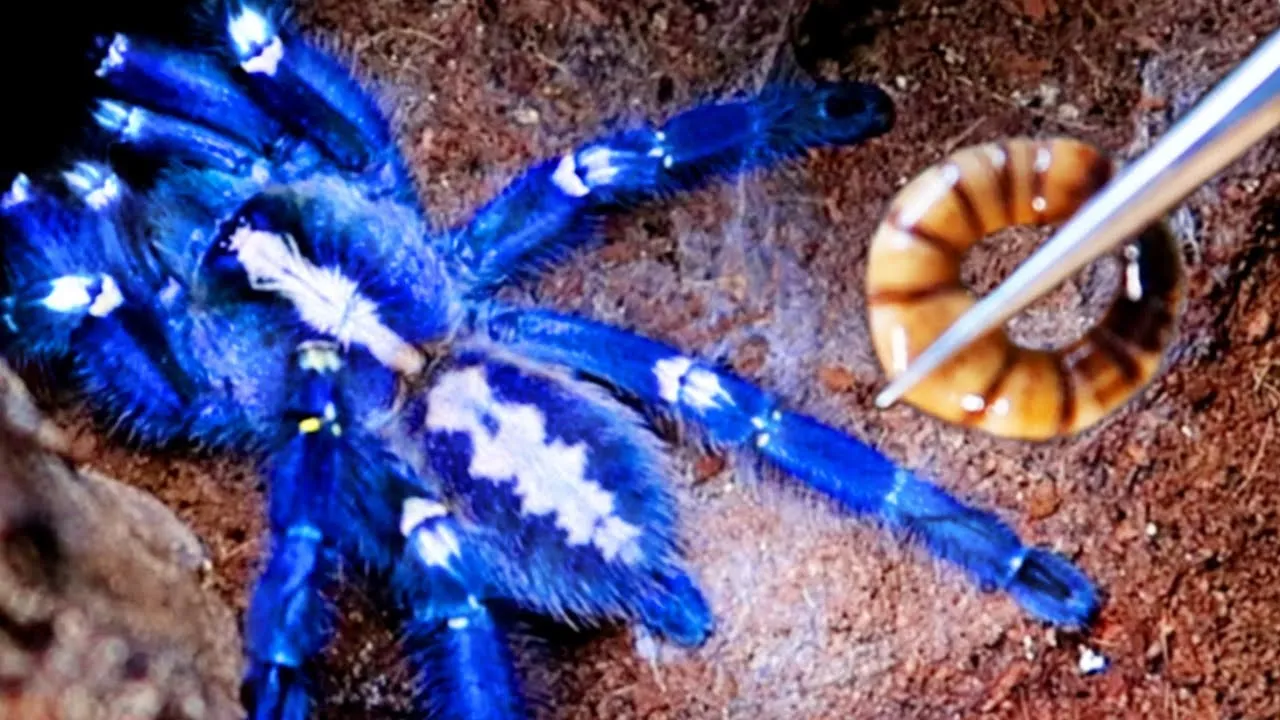
Blue Tarantulas are medium to large-sized spiders, with females generally being larger than males. Adult females can have a leg span of up to 6 inches or more. The most distinguishing feature of the Blue Tarantula is its coloration. The carapace (the top part of the cephalothorax) and legs exhibit a striking blue hue, ranging from a vibrant electric blue to a more subtle shade, depending on the individual and lighting conditions. This coloration is what draws many hobbyists to this species.
Unique Features
Besides their blue coloration, Blue Tarantulas possess other notable features. They have urticating hairs on their abdomen, which they can flick off as a defense mechanism. These hairs can cause irritation if they come into contact with skin. They also have large fangs used for injecting venom into their prey. Like all tarantulas, they undergo molting, shedding their exoskeletons to grow. Each molt reveals a fresh, vibrant blue color, making each stage of their development a fascinating process to observe.
Blue Tarantula Behavior and Temperament
Understanding the behavior and temperament of Blue Tarantulas is crucial for safe and responsible pet ownership. While generally considered to be less aggressive than some other tarantula species, they are still wild animals and should be treated with respect. Their behavior patterns and how they interact with their environment and keepers provide insight into their needs and preferences, helping to create a stress-free environment.
General Behavior
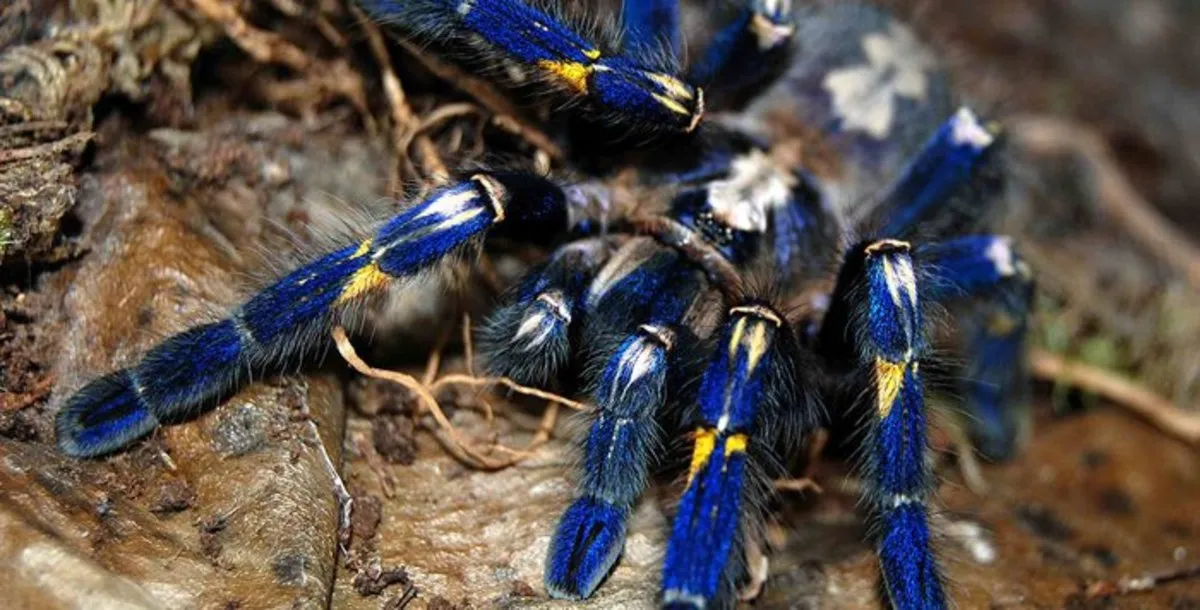
Blue Tarantulas are primarily nocturnal, meaning they are most active during the night. They spend a significant amount of time in their burrows or hiding places, especially during the day. They are ambush predators, waiting for prey to come within striking distance. When threatened, they may flick urticating hairs or assume a defensive posture. They are generally not prone to biting unless provoked. Their behavior is influenced by factors such as temperature, humidity, and the presence of food.
Handling and Interaction
While Blue Tarantulas are less aggressive than some species, handling should be kept to a minimum. It is generally recommended to avoid handling them unless absolutely necessary, such as during enclosure maintenance or health checks. If handling is required, it should be done carefully and gently, preferably with the tarantula walking onto your hand. Avoid sudden movements, which can startle the spider and cause it to react defensively. Always wash your hands thoroughly before and after handling, and be aware of the urticating hairs that can cause skin irritation.
Blue Tarantula Care Guide
Providing the right care is paramount to the well-being of a Blue Tarantula. Replicating their natural habitat as closely as possible will help them thrive. This includes attention to enclosure requirements, temperature and humidity levels, substrate, décor, and dietary needs. Proper care is not only about ensuring the tarantula’s survival but also enhancing their quality of life and allowing you to fully appreciate their beauty and unique characteristics.
Enclosure Requirements

The enclosure should be large enough to accommodate the tarantula’s size and provide ample space for burrowing. A ten-gallon tank is suitable for juveniles, while larger adults may require a twenty-gallon long tank or even larger. The enclosure should have a secure lid to prevent escape. Proper ventilation is important, but be sure to balance this with the need to maintain adequate humidity.
Temperature and Humidity
Blue Tarantulas thrive in a temperature range of 75-85°F (24-29°C). A heat mat placed on the side of the enclosure can help maintain the correct temperature. Humidity levels should be kept between 70-80%. This can be achieved by misting the enclosure regularly, providing a water dish, and using a substrate that retains moisture. Monitoring both temperature and humidity with a thermometer and hygrometer is crucial for maintaining a healthy environment.
Substrate and Decor
The substrate should be deep enough to allow the tarantula to burrow. A mixture of coco fiber, peat moss, and vermiculite works well. The substrate should be kept slightly moist, but not waterlogged. Decor can include cork bark, artificial plants, and hides. These items provide security and enrichment for the tarantula. Ensure that any décor items are secure and don’t pose a risk of injury.
Feeding and Diet
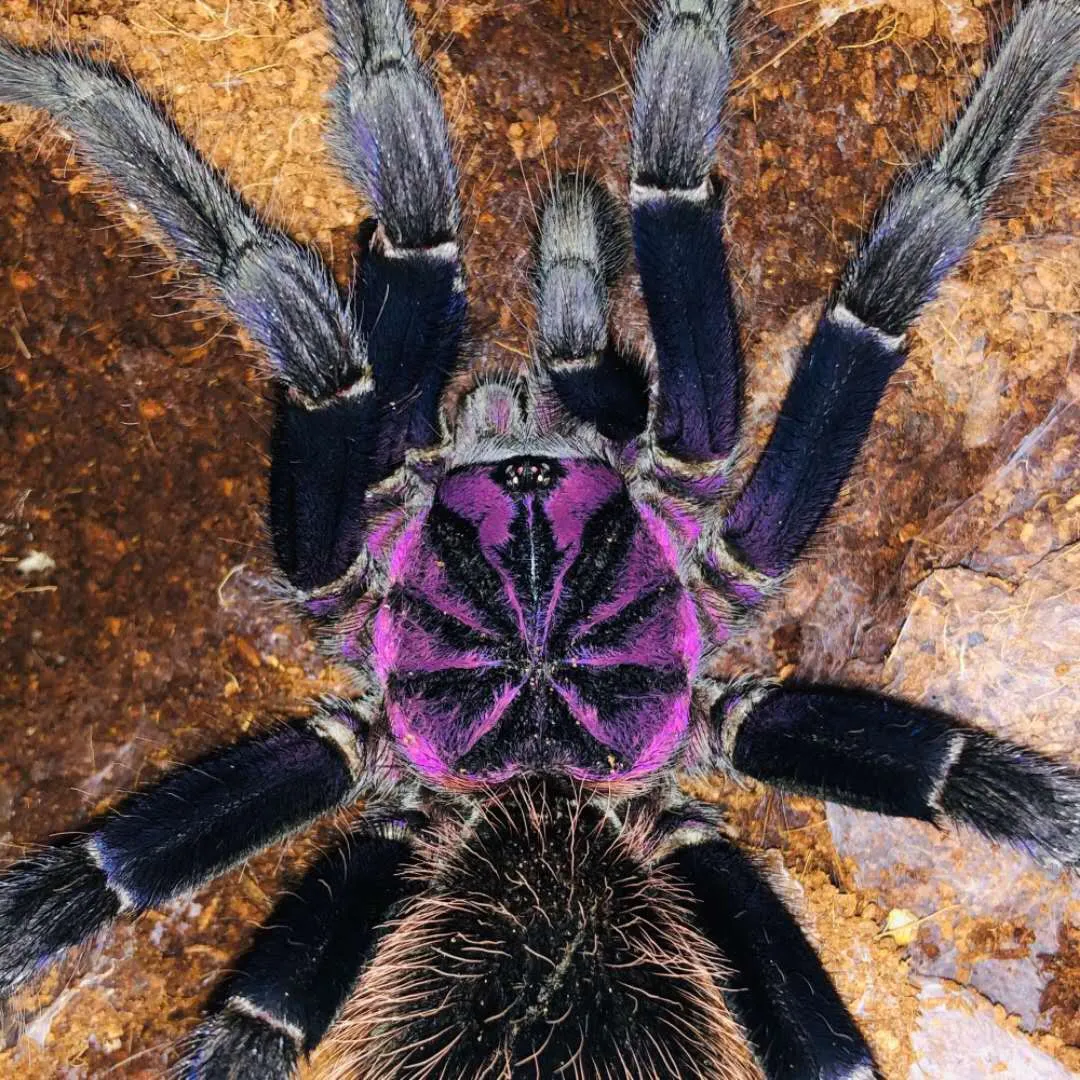
A balanced diet is essential for the health and longevity of a Blue Tarantula. They are carnivores, feeding primarily on insects. The size of the prey should be appropriate for the tarantula’s size. Overfeeding should be avoided, as it can lead to health problems.
Types of Food
Suitable food items include crickets, roaches, mealworms, and other commercially available insects. Variety in the diet is beneficial. It’s important to dust the insects with a calcium and vitamin supplement, especially for growing juveniles, to ensure they receive essential nutrients. Always ensure that the insects are gut-loaded (fed nutritious food) before being offered to the tarantula.
Feeding Frequency
Juvenile tarantulas should be fed more frequently than adults, typically every 2-3 days. Adult Blue Tarantulas can be fed once or twice a week. Adjust the feeding frequency based on the tarantula’s appetite and overall health. Remove any uneaten food within 24 hours to prevent the growth of mold and mites.
Health and Common Issues
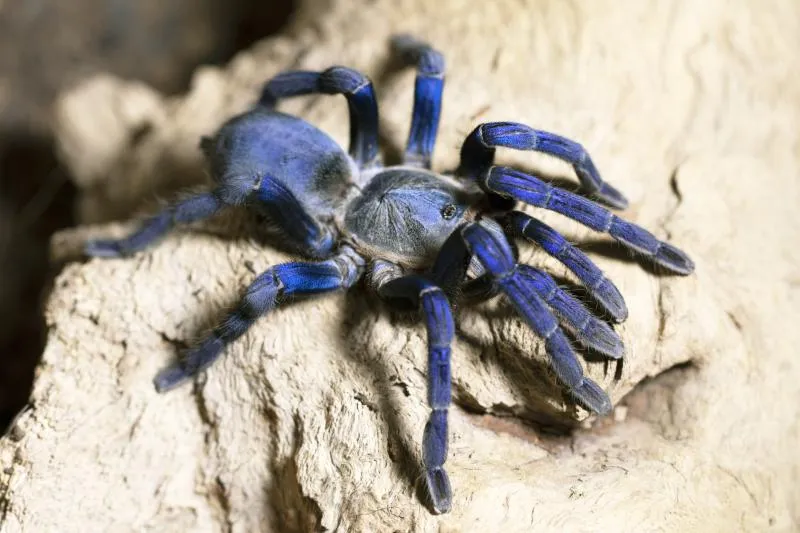
Like all pets, Blue Tarantulas can be susceptible to certain health issues. Recognizing potential problems and knowing how to address them is essential for ensuring their well-being. Regular observation, preventative care, and prompt action if issues arise are key to maintaining a healthy tarantula.
Common Diseases
Some common health issues include parasitic infections, fungal infections, and injuries. Parasitic infections are often caused by mites, which can infest the tarantula. Fungal infections can occur if the enclosure is too humid or if the substrate is not properly maintained. Injuries can result from falls or encounters with prey. Regular inspections of the tarantula and its enclosure are critical for early detection of problems.
Preventative Care
Prevention is the best approach to tarantula health. Maintaining the correct environmental conditions (temperature, humidity, and cleanliness) is crucial. Quarantine new tarantulas to prevent the spread of potential illnesses. Ensure that the enclosure is cleaned regularly, removing uneaten food and waste. Provide a varied diet with vitamin and mineral supplements. By practicing these preventative measures, you can significantly reduce the risk of health problems.
Conclusion
The Blue Tarantula is a fascinating and beautiful pet that can bring a lot of joy to its owner. By understanding their needs, providing proper care, and respecting their natural behavior, you can ensure a long and healthy life for your Blue Tarantula. Owning a Blue Tarantula is a rewarding experience for those who are prepared to dedicate time and effort to their care. With a little knowledge and a lot of dedication, you can enjoy the unique pleasure of sharing your life with these amazing creatures.
